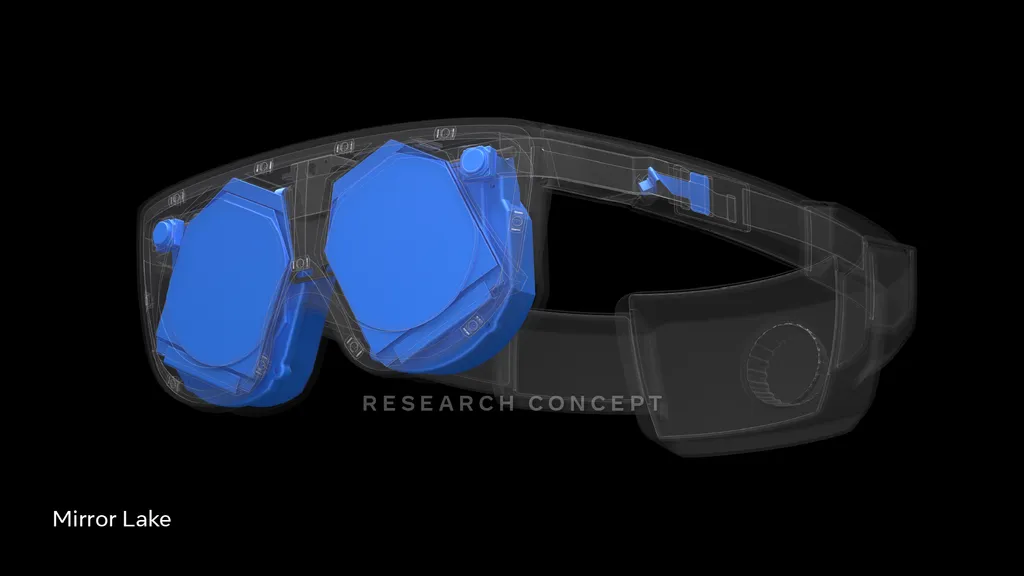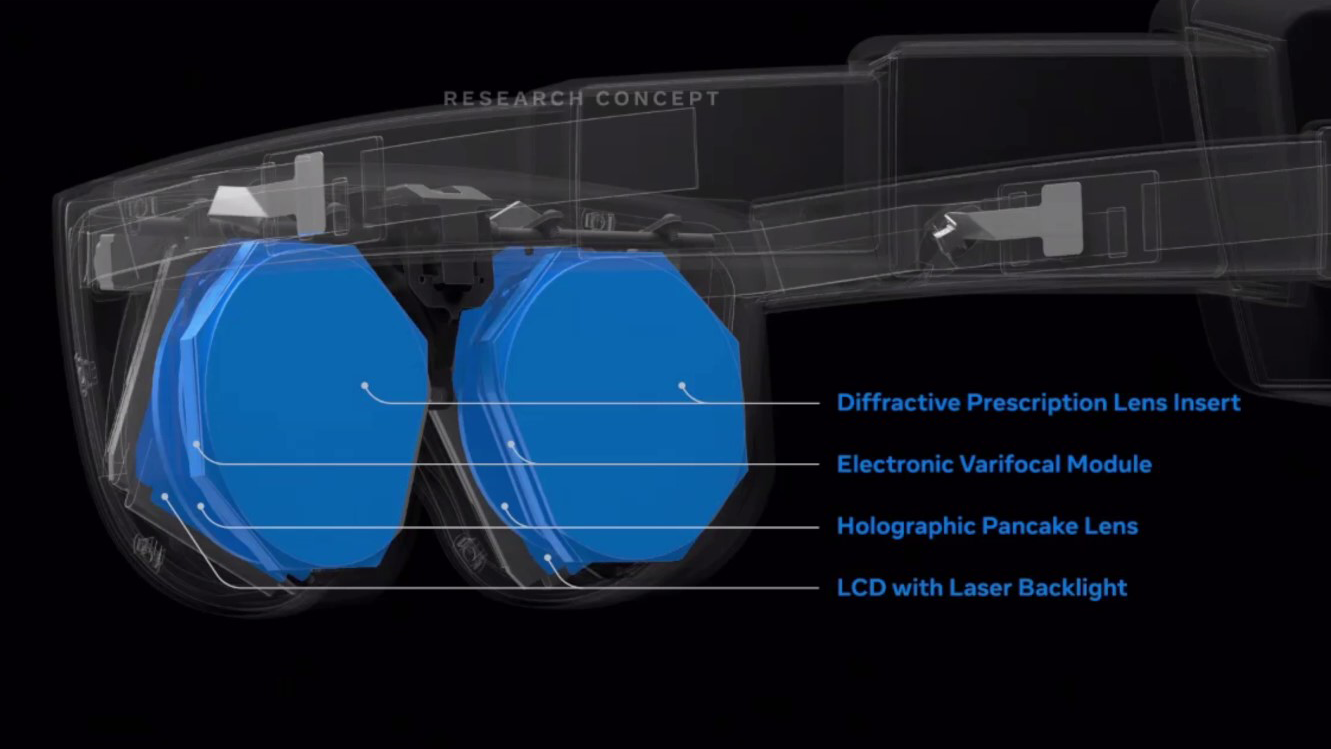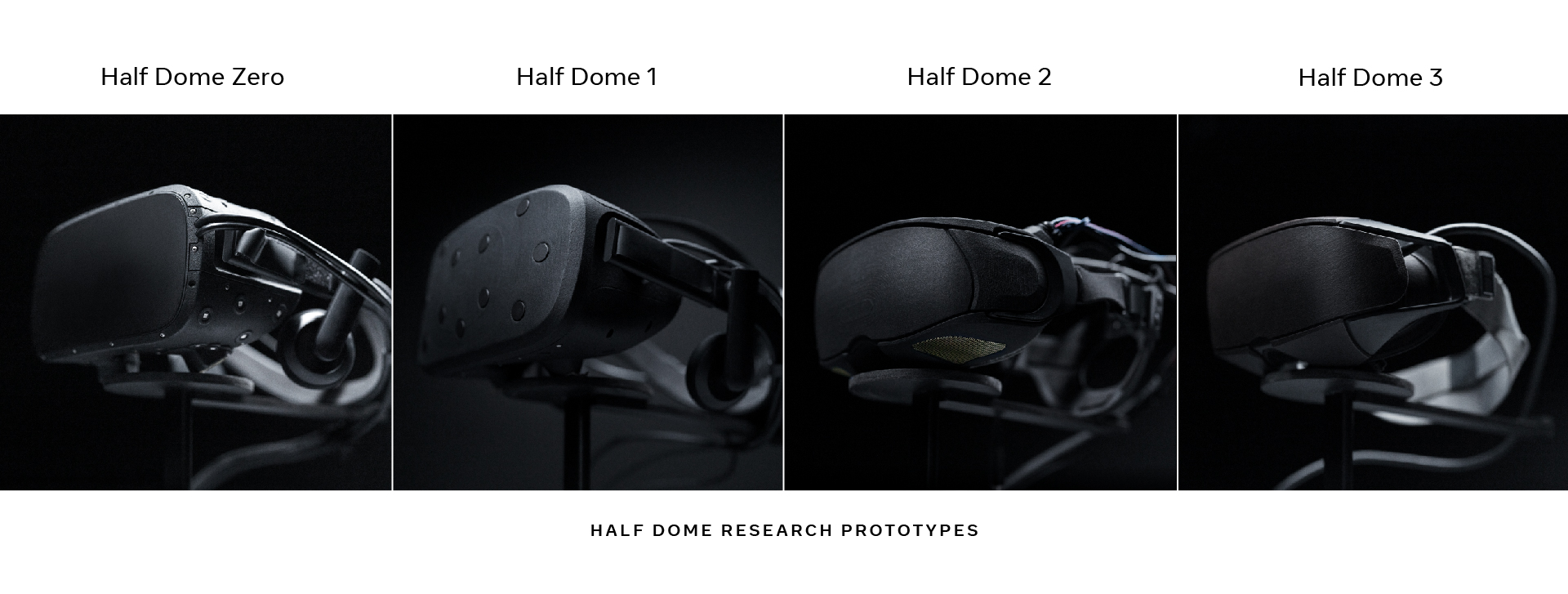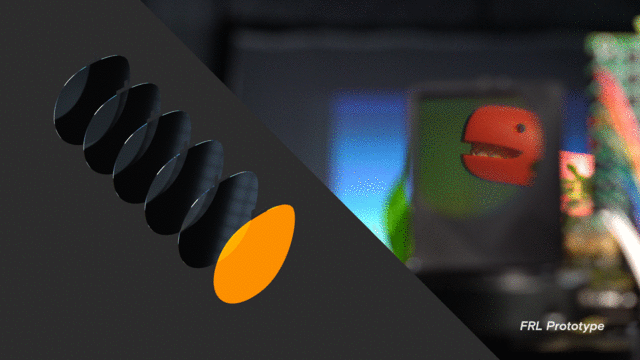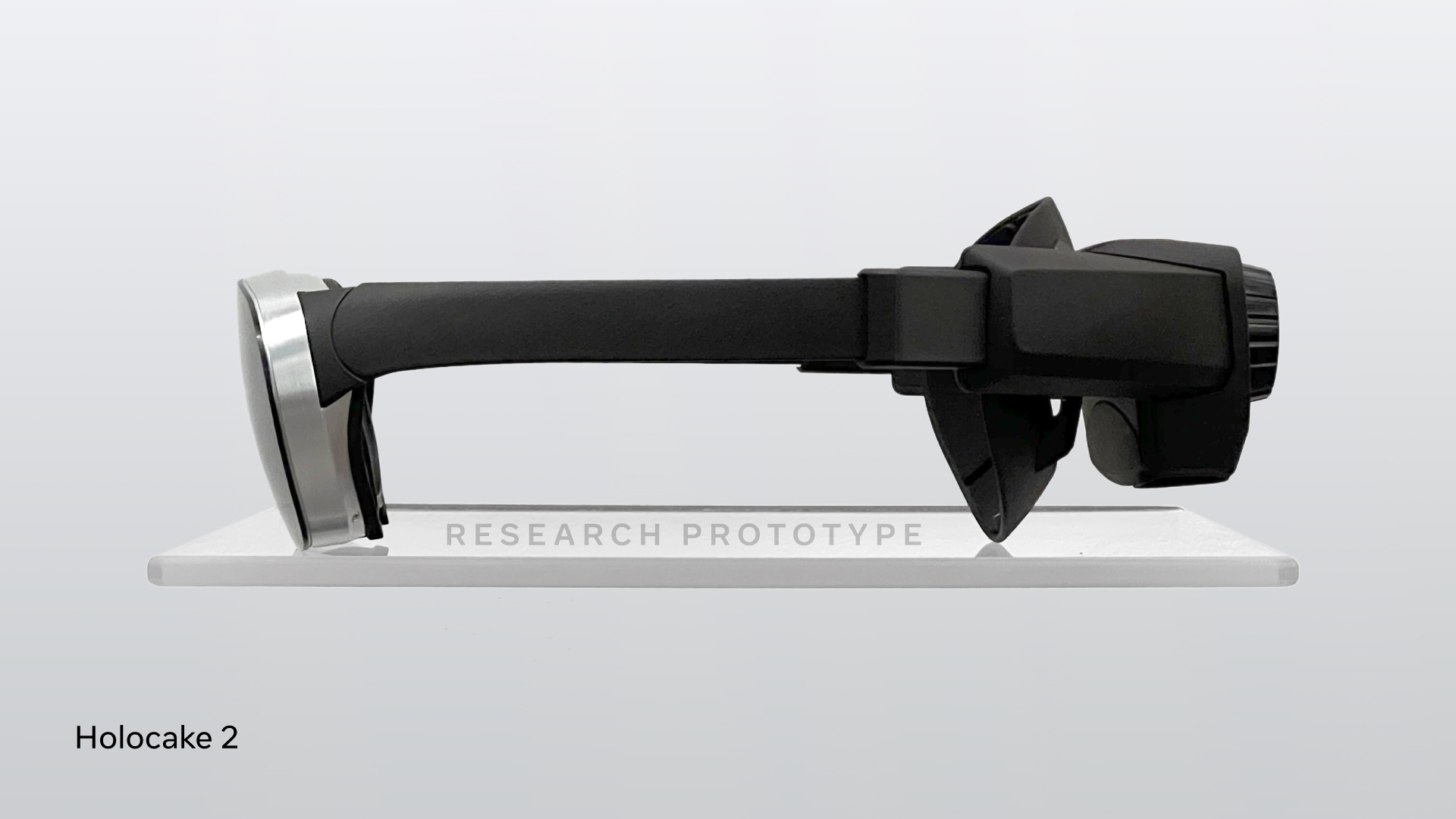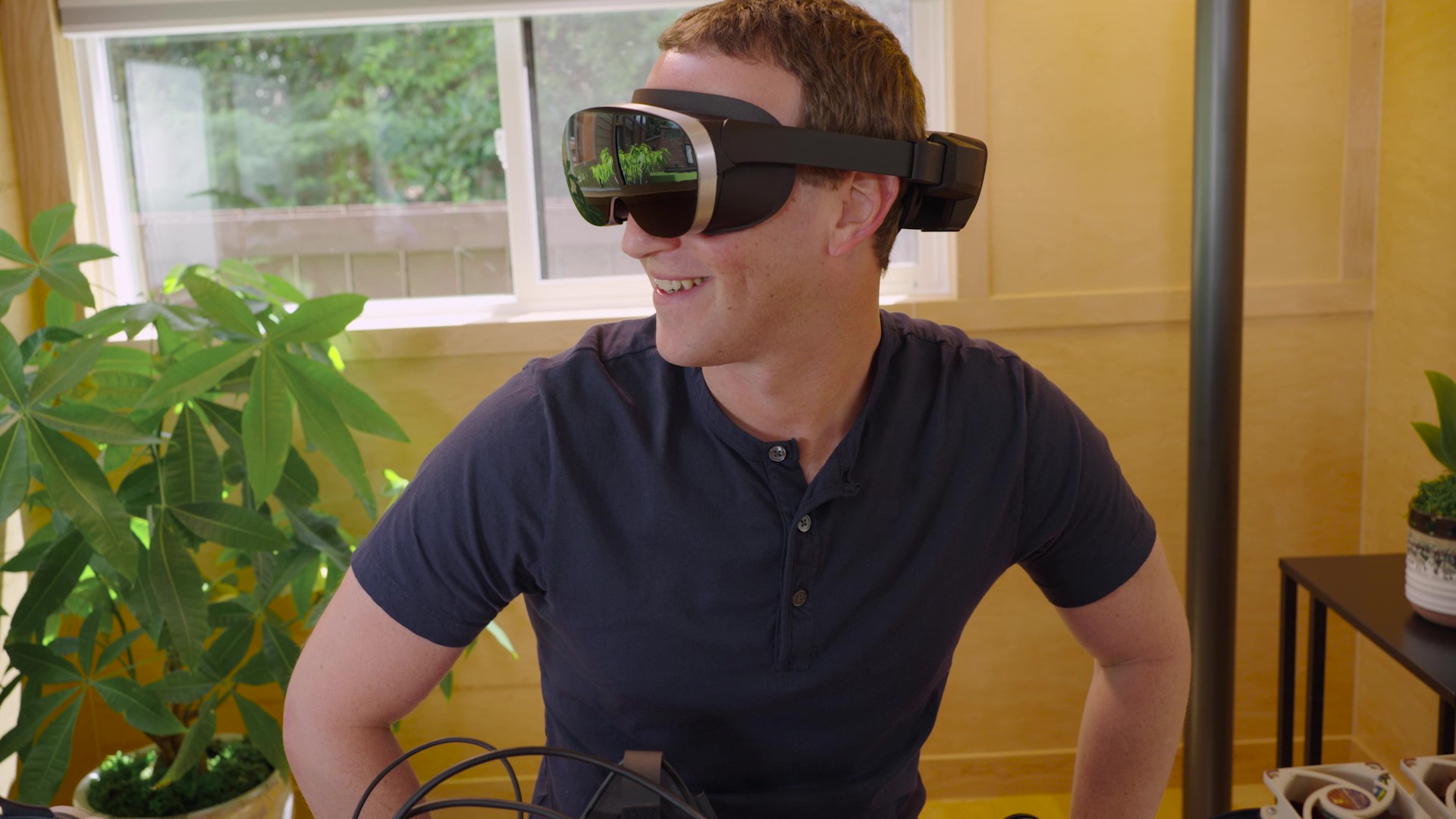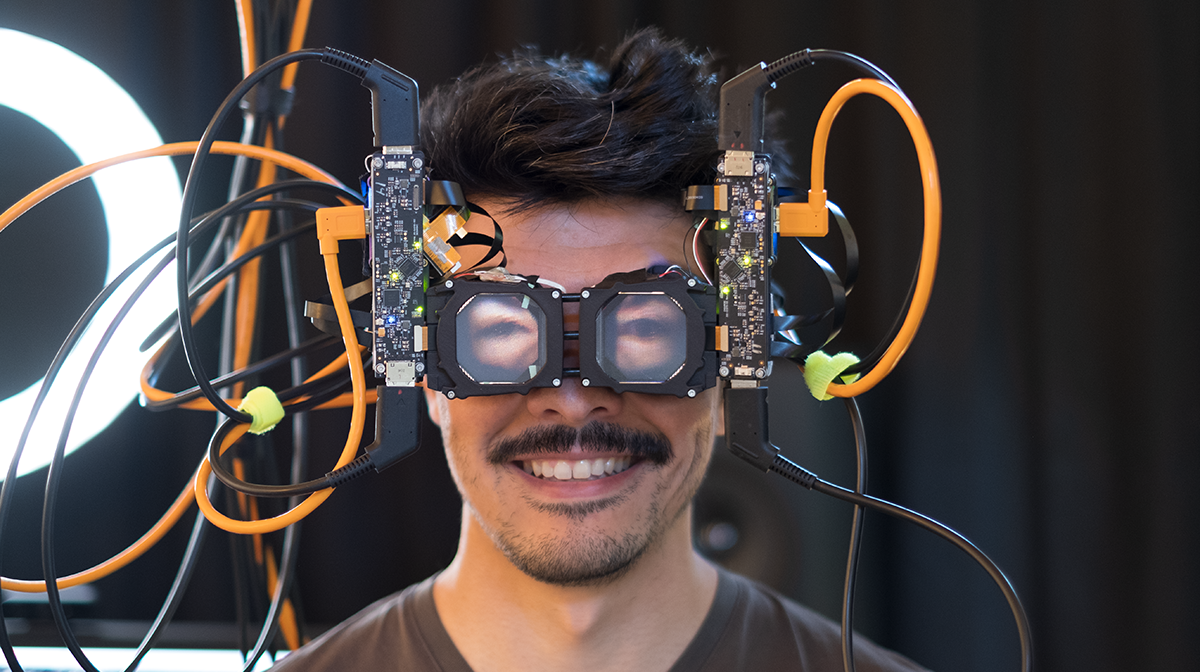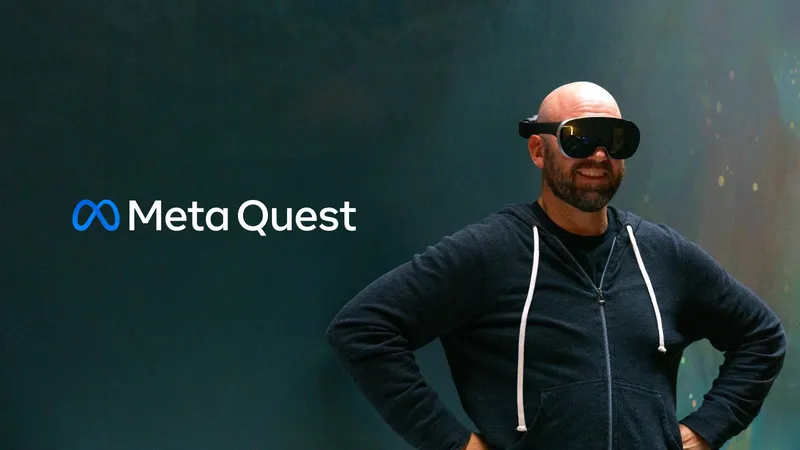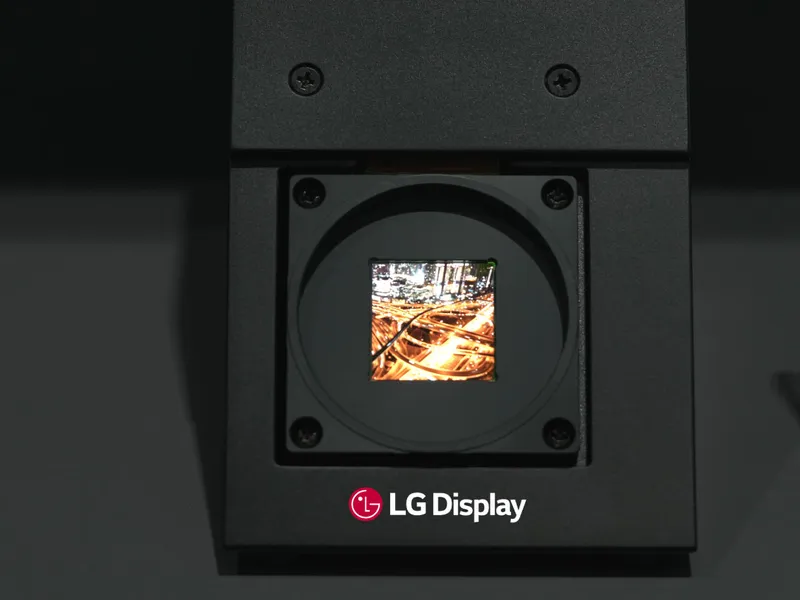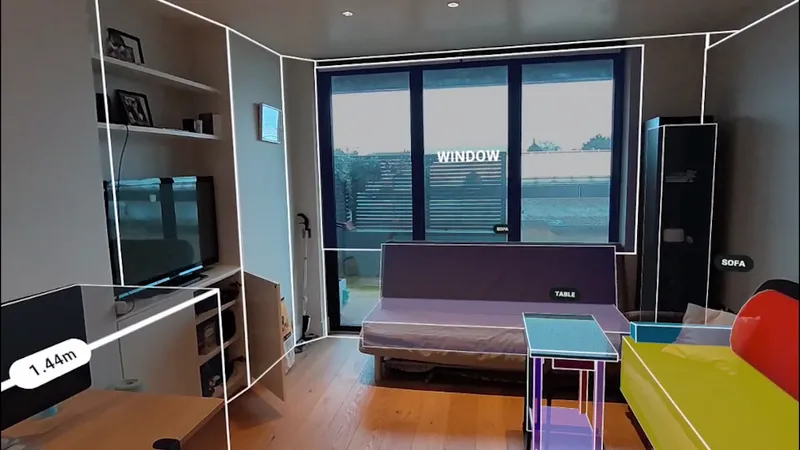Meta is building a prototype headset called ‘Mirror Lake’ to prove out “nearly all of the advanced visual technologies that we’ve been incubating over the past seven years” in a compact form factor.
Mirror Lake hasn’t yet been built into a functional device – it’s still just a concept being actively worked on. Chief Scientist of Meta’s Reality Labs division Michael Abrash said Mirror Lake “shows what a complete next gen display system could look like”. Back in 2019 Abrash announced Facebook was building a “true next generation concept prototype” VR headset, but it’s unclear what happened to that idea.
The concept is designed to achieve a “ski goggles like form factor” with what Meta calls Holocake lenses, while incorporating advanced eye tracking, variable focus, reverse passthrough, and support for prescription lens attachments “to eliminate the need for eyeglasses”.
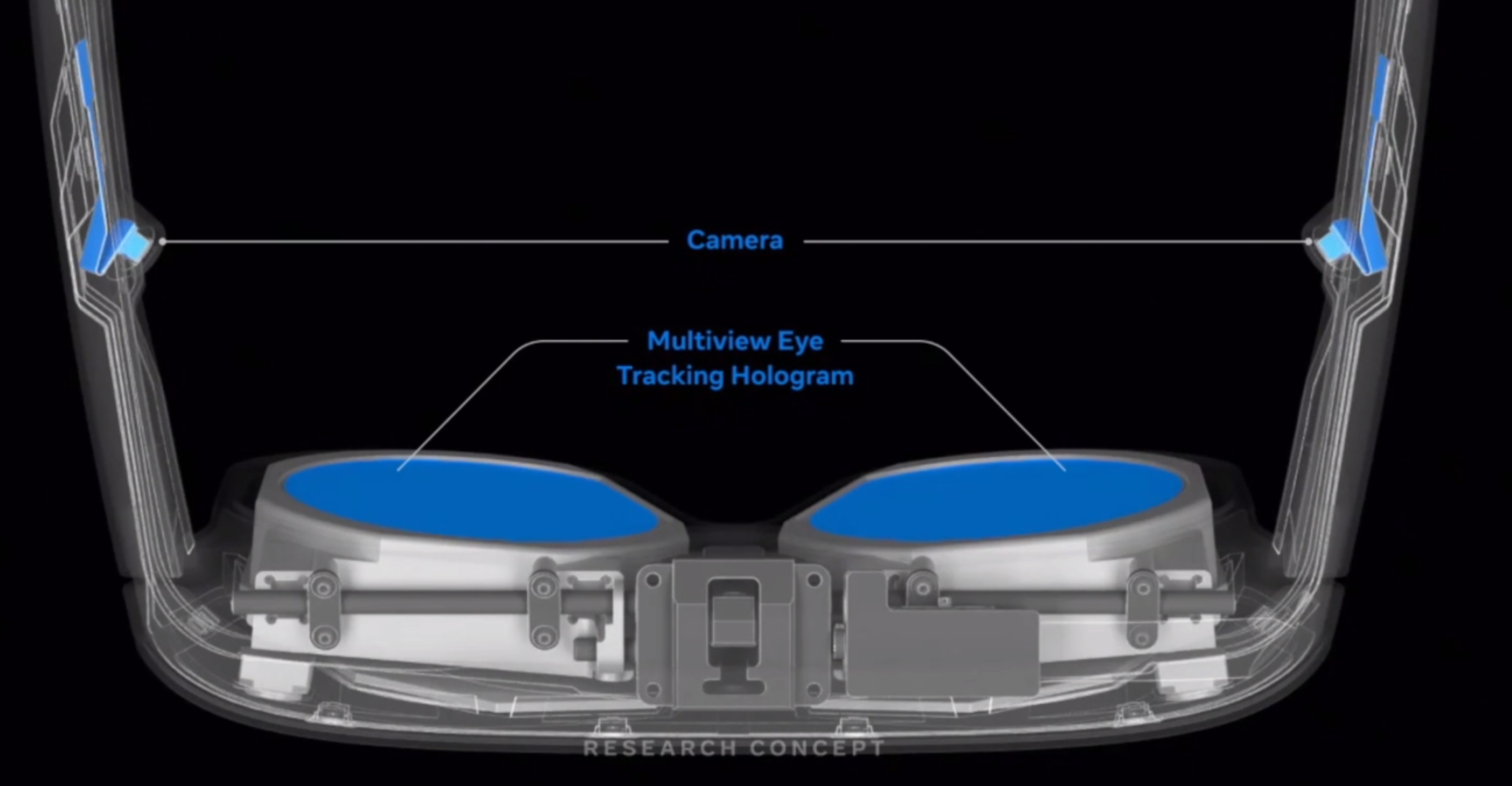
To be clear, Mirror Lake is not a product. Meta CEO Mark Zuckerberg suggested the technology it proves out could be seen in products “in the second half of the decade”.
Varifocal
All current VR headsets, outside of lab prototypes, have fixed focus lenses. Each eye gets a separate image, but the images are focused at a fixed distance. Your eyes will point (converge or diverge) towards the virtual object you’re looking at, but can’t properly focus (accommodate) to this distance. This is called the vergence-accommodation conflict. It causes eye strain and can make virtual objects look blurry close up.
At its F8 conference in 2018 Facebook showed off a prototype headset called Half Dome, which incorporated eye tracking to mechanically move the displays forward or back to adjust focus. Half Dome solved the vergence-accommodation conflict but the mechanical approach would present serious reliability problems in the real world, making it unsuitable to be shipped in products.
At Oculus Connect 6 in 2019 Facebook described Half Dome 2 and Half Dome 3. Half Dome 2 used more reliable actuators and a more compact (but lower field of view) design. Half Dome 3 however took a completely new approach with no moving parts. Instead of moving the display, Half Dome 3 uses a stack of liquid crystal lens layers. Applying a voltage to each lens layer changes its focal length, so each unique combination of on and off results in a different focus distance. With 6 layers, there are 64 different possible focus distances.
While Half Dome 3 is more compact than its predecessors, it’s still much larger than the “ski goggles like” form factor Meta wants to achieve. Mirror Lake will use the same approach as Half Dome 3 but in a significantly smaller form factor, achieved through the use of “Holocake” lenses.
Holocake Lenses
Popular current VR headsets including Quest 2, PlayStation VR, and Valve Index use regular refractive lenses, which necessitate a relatively large display panel and a large gap between it and the lens. This gap is the primary driver of the size and bulk of today’s headsets.
In 2015 eMagin showed an extremely compact prototype HMD design using what are called “pancake lenses”. Pancake lenses use polarization to “fold” the optical path, making it much shorter. Last year HTC shipped Vive Flow, a compact USB powered headset using pancake lenses. Meta’s “high end” headset launching later this year, still only referred to as Project Cambria, will use pancake lenses to achieve a slimmer visor than Quest 2.
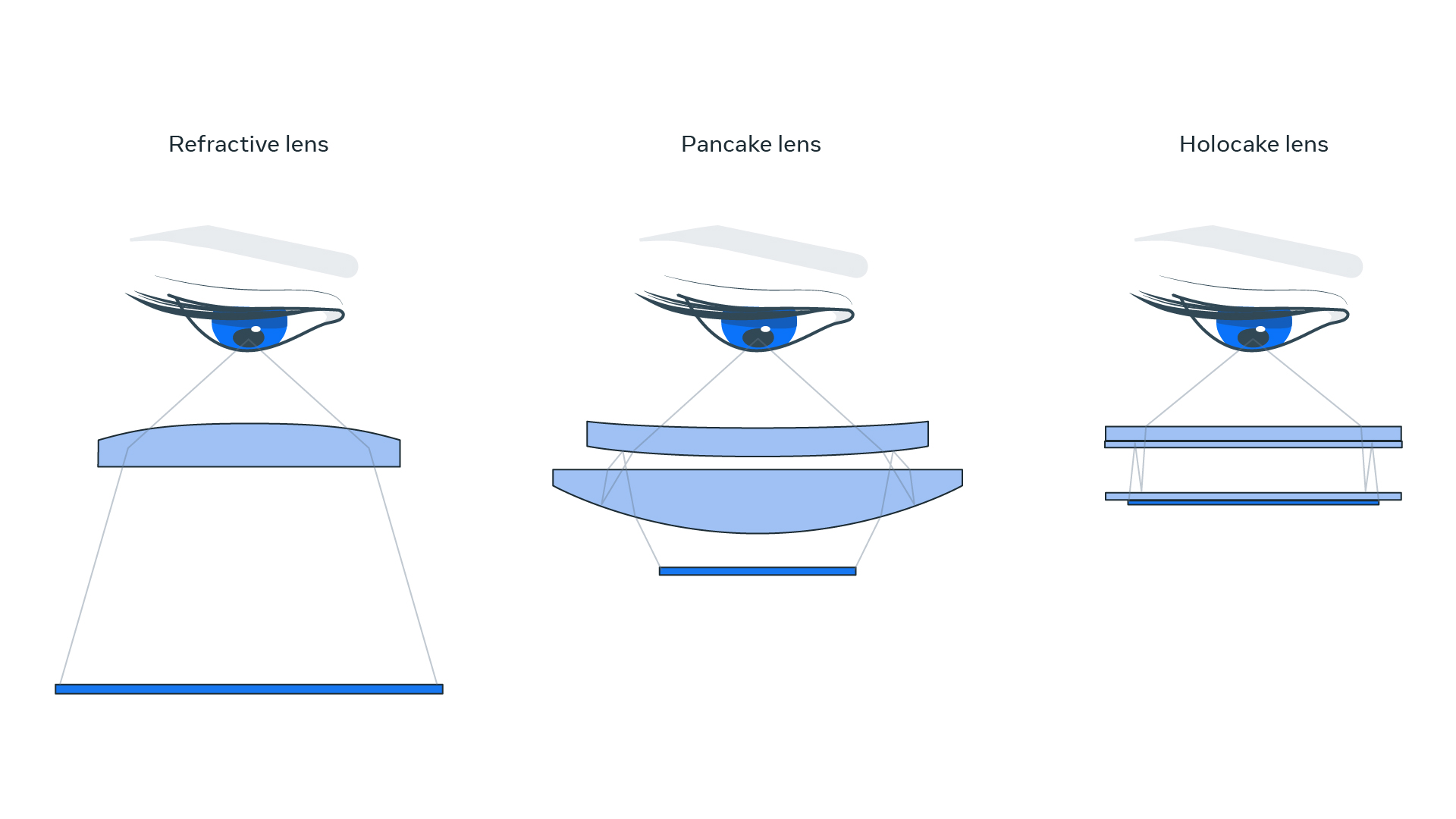
With Pancake lenses the optical path is short enough that most of the remaining thickness is the lens itself. To reduce the size of headsets even further, Meta’s researchers kept the same core concepts of pancake optics – polarization based optical folding – but replaced the curved lens with “a thin, flat holographic lens”, building on research they showed off in 2020. Meta calls the result “Holocake” lenses. To be clear, Meta uses the term “holographic” differently than some others in the industry – this is holographic as in holographic film, not a 3D light field display.
Meta says a “very thin prescription attachment” can be added to holocake lenses for those with reduced vision, eliminating the need to wear glasses inside the headset.
While Mirror Lake is still a concept, Meta has already built out a working prototype headset using holocake lenses called Holocake 2. Meta says Holocake 2 is a fully functional PC VR headset, capable of playing any PC VR title. It calls Holocake 2 “the thinnest and lightest VR headset we’ve ever made”, and its researchers believe further miniaturization is possible. In October Meta’s CTO Tweeted an image of himself wearing what looks like Holocake 2.
Holocake lenses have an important limitation – they require specialized lasers as the light source. LED backlights aren’t suitable. Meta’s Michael Abrash noted that lasers aren’t yet available at the performance, size, and price needed for consumer products. Using lasers does however enable a much wider color gamut, Meta claims.
Reverse Passthrough
One roadblock to mass adoption of opaque virtual and mixed reality headsets could be that others in the room can’t see your upper face & eyes. While high quality color passthrough will let you see them, they can’t fully see you.
Last year Meta researchers presented a prototype of “reverse passthrough” – a headset with external LCD panels rendering a plausible view of the wearer’s eyes. Mirror Lake will be the first fully integrated Meta prototype to feature reverse passthrough.
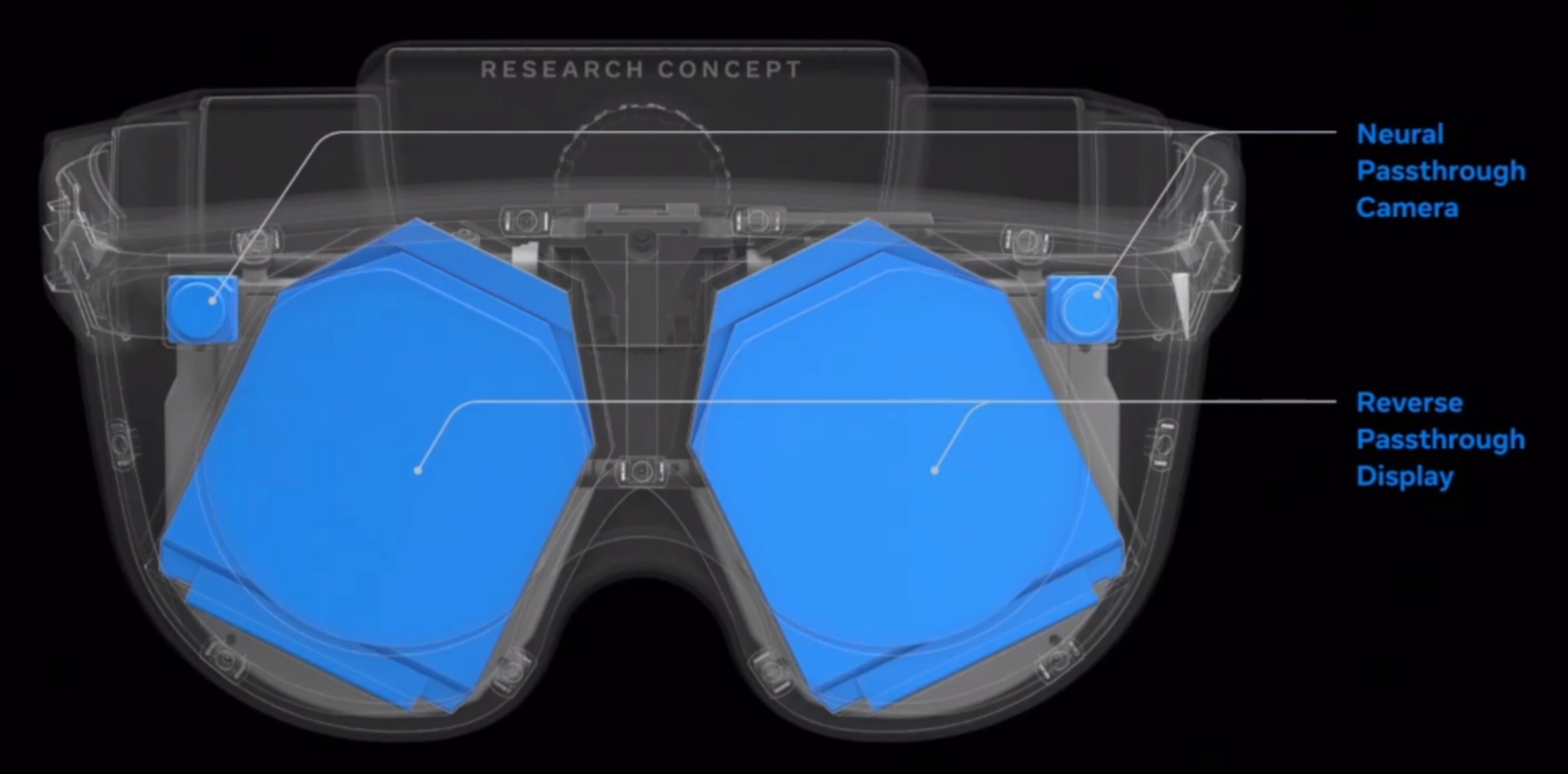
Interestingly, a report last month from The Information claims Apple’s upcoming headset will incorporate reverse passthrough, but adding the screens apparently meant the outward facing cameras had to be placed in “awkward” positions far away from where the user’s eyes would be, making the development of passthrough reprojection algorithms more difficult.

